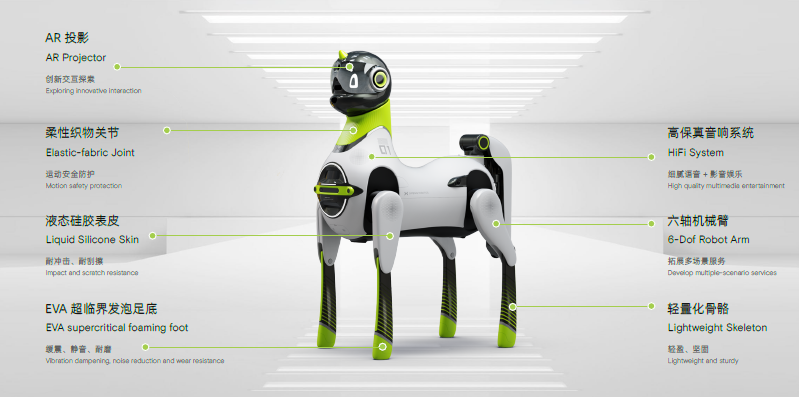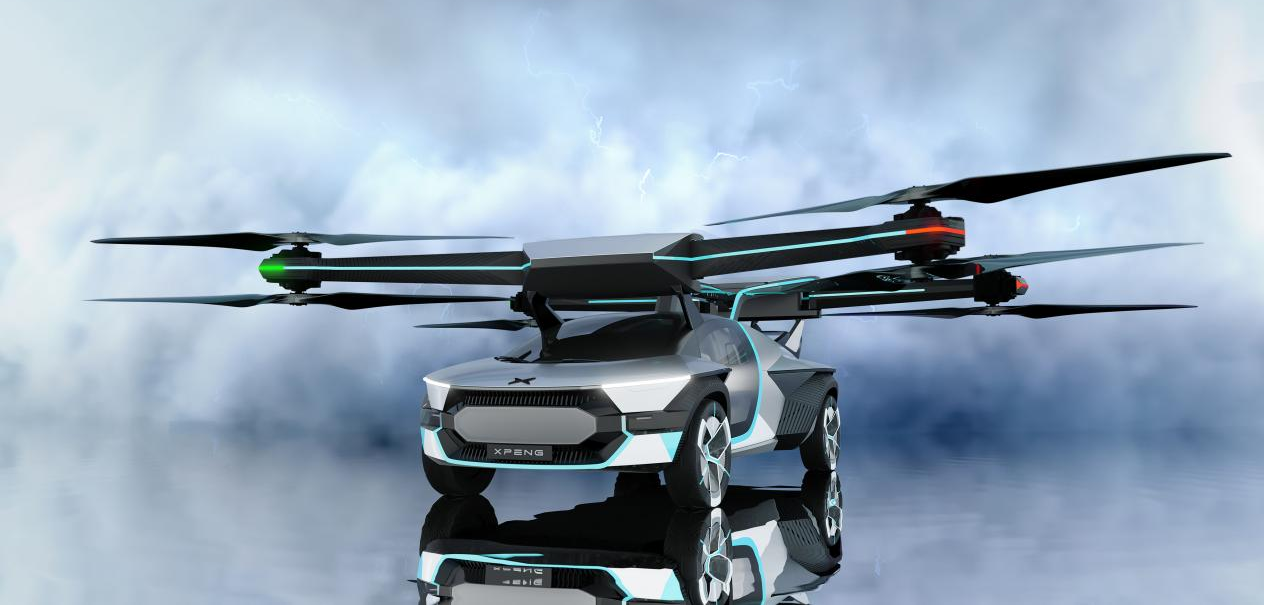Issue 16
Breaking boundaries and embracing changes with a mindset of “customized intelligence”, is becoming the inevitable choice for more and more new energy vehicle manufacturers and even ecosystem participants.
Looking back at the past two years, XPeng Motors has made efforts in assisted driving and has successively launched NGP Navigation Assisted Driving for highway scenarios and NGP Navigation Assisted Driving for urban scenarios.
This time, the focus of XPeng Motors remains on assisted driving but with more mature technology. On October 24th, XPeng Motors’ new generation sensing architecture, “XNet”, was officially launched, and TransFormer network and BEV technology are introduced.
This also means that, under such customized intelligent mode, the entire vehicle development process will achieve the shift from automatic driving to unmanned driving, and the iteration speed will be significantly improved.
In terms of intelligent cars, Wu Xinzhou, the Vice President of Automatic Driving for XPeng Motors, revealed that he hopes to begin testing and operating in Guangzhou in 2023 or 2024, and by 2025, with the development of Robotaxi and hardware capabilities, XPeng will move towards full automatic driving and unmanned driving.
Why do NGP for the city?
Before discussing why XPeng made CNGP (City NGP), Wu Xinzhou posed a question to us: “why do a city scenario that is over 100 times harder?”
Compared to the closed roads of the highway scenario, the urban driving scenario is complex with one-way, multi-directional, and multi-level visible lanes, with significant challenges in logic and positioning. Even parking and usage of cars with non-standard traffic rules are uncertain factors in the urban scenario.
 But for XPeng Motors, assisted driving in urban scenarios is necessary and essential for entering the second half of the new energy vehicle market.
But for XPeng Motors, assisted driving in urban scenarios is necessary and essential for entering the second half of the new energy vehicle market.
According to data, urban roads account for as much as 71% of users’ total driving mileage and up to 90% of driving time when measured by time. Commuting in cities accounts for 100% of users, making urban scenarios both high-frequency and essential for users.
To achieve this, improving the complex scenarios of the urban Navigation Guided Pilot (NGP) requires stronger software capabilities as support.
Specifically, XPeng Motors’ urban NGP and LCC Enhanced Edition both adopt new technical architecture, which has been enhanced in terms of localization, perception, prediction, regulation, and control. Compared with NGP in high-speed scenarios, the code volume of urban NGP has increased by 6 times, the number of perception models has increased fourfold, and the code volume related to prediction, planning, and control has increased by 88 times. Put simply, in achieving urban navigation assisted driving, the system has more things and more autonomy in decision-making.## Is “XNet” the ultimate form of intelligent assisted driving?
This year, after the city’s assisted driving validation is open, XPeng will begin to promote full-scene assisted driving seamlessly fused in multiple scenarios from 2023, and develop to unmanned driving in 2025. Through the XNGP assisted driving system, it can be applied to all cities and roads without high-precision maps, covering scenes such as parking lots, cities, and highways, achieving a fully close to 0 takeover experience in safety, road games, and accessibility, even more reliable than veteran drivers.
Additionally, Wu Xinzhou stated that through the fusion of multiple sensors and preliminary training, P5 can exhibit behaviors that are close to “veteran drivers” and achieve assisted driving in areas covered by high-precision maps. Even when encountering scenarios without high-precision maps, XPeng will still utilize its perception capabilities, ensuring the safety of the driver through features such as LCC-L.
In terms of functionality, XNGP may seem unattainable, but can be achieved with matching software and hardware. Based on the high-precision cameras installed on XPeng G9, two forward-looking lidars, 5 millimeter wave radars, and a calculation platform containing two NVIDIA Orin chips operating at 508 TOPS, XPeng adjusted its perception architecture and adopted the XNet new perception architecture.The emphasis of XNet’s new perception architecture is on multi-camera/multi-frame, which personally refers to the fusion of multi-vision, corresponding to the previous single-camera single-frame fusion with no correlation between the upper and lower frames of the two cameras. In the XNet architecture, “slide” becomes “long video” and will be fused through the images of multiple cameras in BEV via Transformer (need to learn), thus displaying information about the dynamic or static aspects of target objects.
Deployment of Transformer: Dynamic XNet requires 122% of Orin-X’s computing power, which can be reduced to 9%.
Dynamic XNet: Outputs information such as the position, posture, size, speed, and predicted trajectory of target objects based on visual recognition.
Static XNet: Real-time construction of “high-precision maps” through recognition of lane markings, road boundaries, stop lines, etc. expanding the system’s scope and stability.
It is worth mentioning that in order to form a fully closed-loop and self-growing AI and data system, Xpeng has developed an automatic annotation system. It has sold 45,000 times more than traditional annotation systems and reached its previous registration volume of 2,000 people in just 16.7 days. In order to cope with relatively rare use cases, Xpeng also uses UE engine to develop a simulation training system. When the amount of data is not sufficient for training, Xpeng will use “directional simulation” to create a large number of similar scenarios in the virtual world for network training, and then conduct a push after various simulated corner-case verifications.
Full-Scene Voice 2.0, On Duty for 24 Hours
The significance of voice interaction is to free the user’s hands.
Two years ago, Xpeng’s “Full-Scene Voice” system created a sensation. Two years later, Xpeng introduced the Full-Scene Voice 2.0, which applies MIMO multi-sound area technology to car voice systems, achieving one-to-many voice conversations between people and vehicles, thus possessing the “full-area, full-time” voice interaction ability.
In short, Full-Scene Voice 2.0 enables Xiao P to be on standby for 24 hours without wake-up, recognizes and executes commands from each seat simultaneously, achieves precise processing of four-way audio, cross-audio-zone contextual conversation, multi-person instructions, and multi-way voice feedback.
Based on the new voice interaction architecture, Full-Scene Voice 2.0 also responds very quickly, with feedback from wake-up to interface delay of only 245ms, voice feedback of less than 700ms, and a delay of less than 1S from command sending to execution. It has the function of listening, thinking, doing, and answering at the same time, and can even execute four commands with just one sentence.
In the case of no network or network disconnection, Full-Scene Voice 2.0 supports more than 600 functions to meet daily car needs.
Smart Robot [Little White Dragon] and the New Generation (Sixth Generation) Flying Car
In addition to cars, XPeng’s robot horse and flying car are also the highlights of this event.
XPeng believes that smart robots are the iconic products that open the age of intelligence, different from smart cars, and are new products that directly enter the “driverless” stage. Compared with the previous generation of robot horses, the current machine can evolve into AR projection in the head, and can also be equipped with high-fidelity audio systems. In its “joints”, flexible fabric joints, liquid silicone skin, EVA supercritical foam soles, lightweight skeletons and other applications have been added, greatly increasing the potential for interaction between robots and physical environments.
 It can be inferred that XPeng’s intelligent robot is also based on XPeng’s systemic capabilities in the automotive field and applies many concepts from intelligent automobiles, such as power systems, autonomous driving, human-machine interaction, AI capabilities, etc., to achieve mass production.
It can be inferred that XPeng’s intelligent robot is also based on XPeng’s systemic capabilities in the automotive field and applies many concepts from intelligent automobiles, such as power systems, autonomous driving, human-machine interaction, AI capabilities, etc., to achieve mass production.
In addition, XPeng also showcased a flying car with a modular structure.
Compared to last year’s concept car, the new generation (sixth generation) flying car is equipped with a mechanical arm folding and storage system, allowing for free switching between land and air environments. The car body material uses a carbon fiber monocoque shell, with a large amount of aviation aluminum, magnesium alloy, and special glass, as well as high-energy density, high-discharge rate power batteries.
According to XPeng’s chairman and CEO, He XPeng, based on XPeng’s independently developed “Huitian” car flying driving control system, in land mode, the driving mode is consistent with automobiles, and in air mode, the direction is controlled by the steering wheel and gear lever to achieve the purpose of flying. Under conditions allowed by regulations and the environment, the flying car can take off and land vertically and cross obstacles such as congestions, barriers, and rivers, meeting people’s needs for short-distance low-altitude travel.
Of course, based on the maiden flight of XPeng’s flying car, the overall shape of the vehicle still needs improvement, and there are obstacles to truly achieving “land-air integration.”
The electric power has something to say:The final form of XNGP intelligent assisted driving and all-scenario voice 2.0, announced during this year’s technology day, is the result of a year-long effort by XPeng Motors, which is only natural for the company. As for the intelligent robot, “Little White Dragon,” and the new sixth-generation flying car, they are new products resulting from XPeng’s continued exploration in the field of technology.
That being said, some netizens have “suggested” that XPeng focus on making cars. Although many car companies are also engaged in research on flying cars and some have entered into the four-legged bionic robot field, ultimately, it is the customers who determine the success of a product. Thus, the ultimate goal for car companies is to successfully produce and market every piece of “sky-high” technology developed.
For car companies, conquering new technologies is undoubtedly a way of further equipping themselves in the industry, forcing car companies to accelerate their upgrading and transformation. In recent years, it is also easy to notice the continuous convergence of intelligent cars with other industries. XPeng Motors’ birth itself has a deep connection with technology as it was founded by an Internet industry veteran, He XPeng, who relatively speaking has a clearer vision regarding the tech industry.
Over the years, XPeng Motors has been dedicated to intelligent assisted driving, and it wasn’t until the fourth XPeng Motors technology day that the company’s focus shifted gradually towards unmanned driving, proving that intelligent driving has always been XPeng’s primary research topic.
In today’s age of “everything interconnected,” combining hardware and software, electrification, ecology, intelligence, new things, and new methods have become commonplace. The emergence of intelligent robots and flying cars exemplifies XPeng’s expectation for future technology.
This article is a translation by ChatGPT of a Chinese report from 42HOW. If you have any questions about it, please email bd@42how.com.
